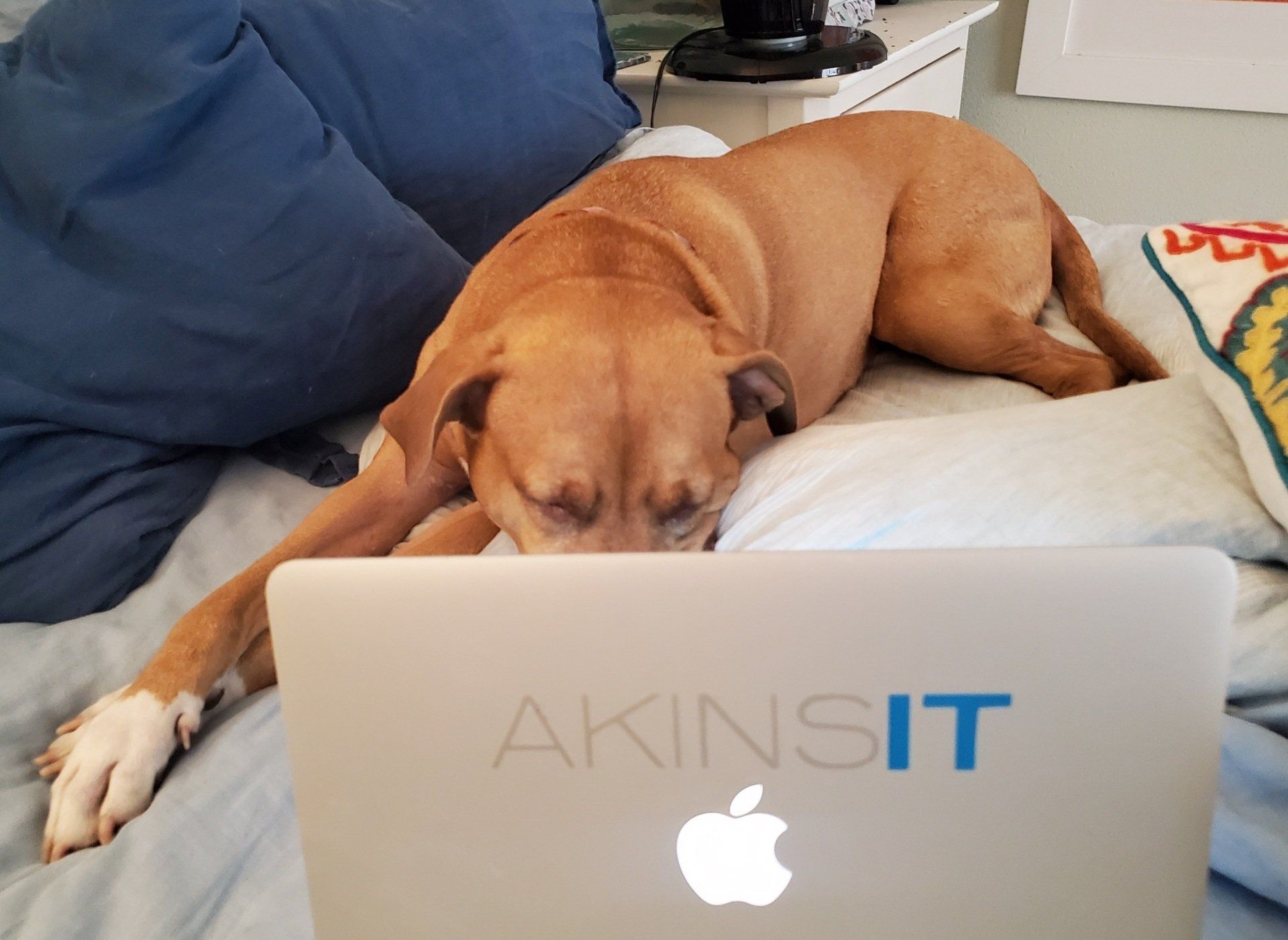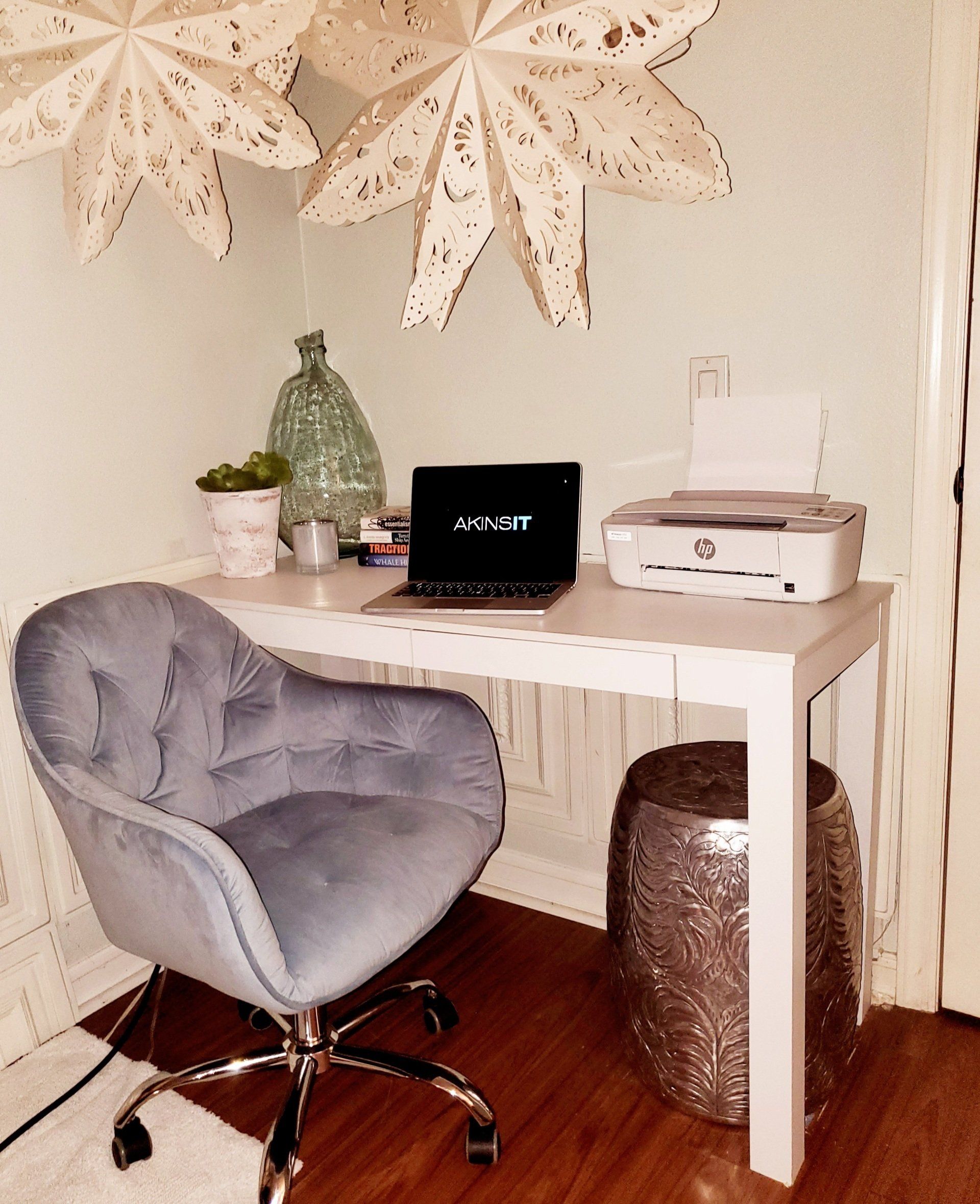She's been with Akins IT since Day 1, starting back in June 2011. She's a face not usually seen, but always working behind the scenes- our Chief Financial Officer, Michelle McKernan. We took a peek into Michelle's life and how it has been working from home due to COVID-19.
Learn more about Michelle's work from home experience below
HOW HAS YOUR WFH EXPERIENCE BEEN FOR YOU? HOW DID THE TRANSITION GO FOR YOU?
Funny enough, work from home has not been any different for our CFO, seeing as she has always worked remote. However, Michelle feels like she has had more interaction with employees now more than ever since remote work started. Here at Akins IT, we require video conferences for every meeting, so that has allowed Michelle to experience more virtual face-to-face conversations with our team members.
ANY BENEFITS WORKING FROM HOME?
Working at home has its benefits. Michelle has the cutest co-worker, Sandy! But by the looks of it, Sandy doesn't work too much...
WHAT CHANGES DID YOU HAVE TO MAKE WORKING FROM HOME?
Luckily for Michelle, she already had her stylish home office set up so no changes had to be made at the start of work from home.
ANY NEW HOBBIES PICKED UP DURING QUARANTINE? OR SOMETHING NEW YOU LEARNED?
During the quarantine, Michelle said she has redecorated her living room and binge-watched almost every trending show. Right now she is in the process of making one of her famous, beautiful mosaic surfboards (we currently have one of her pieces of work in our boardroom). Her current piece is inspired by sea turtles underwater- it is not complete yet, but this surfboard already looks amazing!








